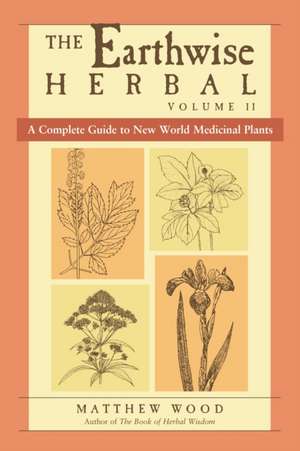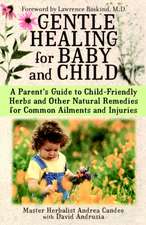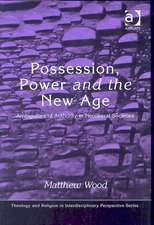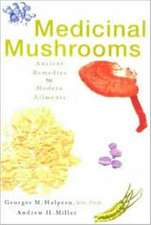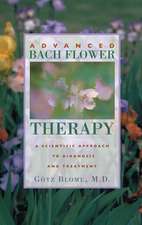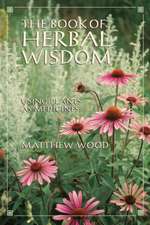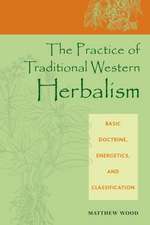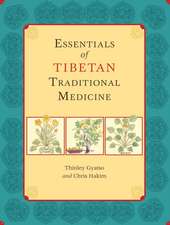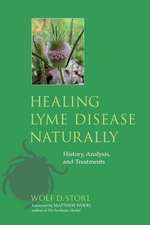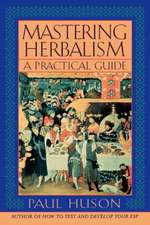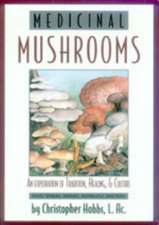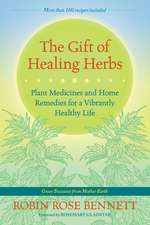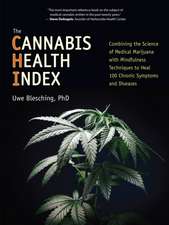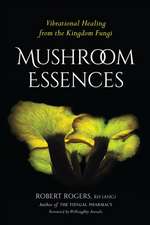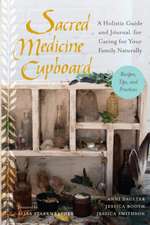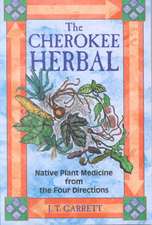The Earthwise Herbal: A Complete Guide to New World Medicinal Plants
Autor Matthew Wooden Limba Engleză Paperback – 31 mar 2009
Wood, who has systematically studied ancient and traditional herbal literature, takes a historical view and presents information in a thoughtful, engaging, nontechnical style. In addition, he provides remarkable case studies as well as insight into the “logic” of each plant—its current and past usage, pharmacological constituents, and other elements that together produce a comprehensive portrait of each herb.
| Toate formatele și edițiile | Preț | Express |
|---|---|---|
| Paperback (2) | 144.69 lei 3-4 săpt. | |
| NORTH ATLANTIC BOOKS – 31 mar 2009 | 144.69 lei 3-4 săpt. | |
| NORTH ATLANTIC BOOKS – 31 mai 2008 | 209.63 lei 3-5 săpt. |
Preț: 144.69 lei
Preț vechi: 211.08 lei
-31% Nou
Puncte Express: 217
Preț estimativ în valută:
27.69€ • 30.17$ • 23.33£
27.69€ • 30.17$ • 23.33£
Carte disponibilă
Livrare economică 02-09 aprilie
Preluare comenzi: 021 569.72.76
Specificații
ISBN-13: 9781556437793
ISBN-10: 155643779X
Pagini: 399
Ilustrații: 25 B&W ILLUSTRATIONS
Dimensiuni: 154 x 229 x 29 mm
Greutate: 0.63 kg
Editura: NORTH ATLANTIC BOOKS
Locul publicării:United States
ISBN-10: 155643779X
Pagini: 399
Ilustrații: 25 B&W ILLUSTRATIONS
Dimensiuni: 154 x 229 x 29 mm
Greutate: 0.63 kg
Editura: NORTH ATLANTIC BOOKS
Locul publicării:United States
Notă biografică
Matthew Wood, a practicing herbalist for more than twenty-five years, lives on an herb farm west of downtown Minneapolis. He is a graduate of the University of Minnesota and holds a Master of Science degree in Herbal Medicine from the Scottish School of Herbal Medicine, accredited by the University of Wales. Wood is the author of five previous books (all published by North Atlantic Books) and a registered herbalist, or professional member, of the American Herbalists Guild, the only self-regulating body of practicing herbalists in the United States. He is also on the faculty at Minneapolis Community Technical College in the Western Herbalism program.
Extras
From "Herbalism and Holism"I have called this herbal “earthwise” to contrast it to other herbals reflecting the pharmacological approach. It is based on sources that the scientific approach ignores: historical uses, folk medicine, folk practitioners, the experience of actual herbalists, intuitive concepts of energy, plant properties, and medicine, daydreams, and dreams. It is, however, “scientific” in a broader sense of the word because it follows an organized and reasonably critical approach to understanding plant medicine. The Earthwise Herbal is organized around the concept that each plant has an innate intelligence or core “essence,” as the ancients would have said, binding together the disparate properties and uses into a meaningful and logical or intuitive whole. The compounds in the plant, its appearance, growth habit, ecological niche, and medicinal properties are united by this common personality, intelligence, or essence. This knowledge not only represents the “inwardness” of the thing—as the Quakers would say—but it represents the whole that unites the parts. This approach is thus set upon a holistic foundation.Because the emphasis is placed on the inwardness of the herb, The Earthwise Herbal is more expressly concerned with the use of individual herbs. It describes the properties of individual herbs and does not address their interaction or formulation. It is not written in opposition to formula-making, but in an attempt to help clarify and describe the properties of individual plants.In ancient times single herbs were known as “simples,” in contrast to combinations, or “compounds.” Those who used single herbs were called “simplers.” In general, they were less educated than the college physicians who developed extensive doctrines or systems, classified herbs according to properties (first with energetic systems and later with pharmacology), and used complex preparations (at first compounds, later pharmaceutical products). This herbal follows the approach of the simplers, not only in their use of individual herbs, but in their methods for determining the properties of herbs. As Dr. W. T. Fernie (1914, 1) explains: These primitive Simplers were guided in their choice of Herbs partly by watching animals who sought them out for self-cure, and partly by discovering for themselves the sensible properties of the plants as revealed by their odor and taste; also by their supposed resemblance to those diseases which nature meant them to heal.The simplers have been laughed at because of their use of the “doctrine of signatures” (the plant looks like the disease or organ), but there is a great deal of shrewdness in the observations of Nature made by people who live close to the natural world. Mother Nature is very efficient: plants are streamlined representatives of the forces that have formed them. No shape, color, or pattern is accidental. Form is related to function.I have also attempted to build a knowledge of plant properties based on the scholarly tradition. This started with energetic systems—that is, analysis of plants and diseases by hot or cold, damp or dry, yin or yang, or four or five elements, and so on. These analytical approaches, suited to the intuition, can help to describe herbal properties. Simple pharmacological information has also been included. The knowledge of plant constituents is often helpful in recognizing their potential properties. Taste and odor, referred to by Father Kneipp and Dr. Fernie, are very closely related to energetics and pharmacology.Plants are much older than we are. They have survived ruthless natural selection and have been honed by millennia of threat and stress to become the individuals that they are. Although not intelligent in the sense that we are, every molecule of the plant is held together by a common purpose—survival—and if we can understand the core essence that binds the whole together we can understand what the plant will do for us as a medicine...
Recenzii
“In The Earthwise Herbal, Matthew Wood has revived the richness, depth, and dignity of the herbal medicine of the old masters, while at the same time endowing it with a new cosmopolitan, cross-cultural flavor that lifts it to a genuinely planetary level.”
—Rudolph Ballentine, MD, author of Radical Healing
“Matthew Wood propounds with great clarity, wisdom, and his own experience the gifts the earth in its wisdom has given us in the form of amazing medicines for almost all our ills, whether of body, mind, emotion, personality, or constitution.”
—Anne McIntyre, herbalist (NIMH)
"Matthew Wood has put his over 25 years of experience as a practicing herbalist into the heart of this book, giving us all something worthy of study and reference, no doubt for generations to come. His understanding of the spirit of herbalism, along with his love of the craft, is contagious—I sincerely hope many people will catch a good dose of his knowledge!"
—dkMommySpot
“What [Matthew Wood] brings to herbalism is a first-hand sense of the old Western herbal knowledge with each plant steeped in its historic role.”
—The American Herb Association
—Rudolph Ballentine, MD, author of Radical Healing
“Matthew Wood propounds with great clarity, wisdom, and his own experience the gifts the earth in its wisdom has given us in the form of amazing medicines for almost all our ills, whether of body, mind, emotion, personality, or constitution.”
—Anne McIntyre, herbalist (NIMH)
"Matthew Wood has put his over 25 years of experience as a practicing herbalist into the heart of this book, giving us all something worthy of study and reference, no doubt for generations to come. His understanding of the spirit of herbalism, along with his love of the craft, is contagious—I sincerely hope many people will catch a good dose of his knowledge!"
—dkMommySpot
“What [Matthew Wood] brings to herbalism is a first-hand sense of the old Western herbal knowledge with each plant steeped in its historic role.”
—The American Herb Association
Cuprins
Introduction ix
Herbalism and Holism xi
Reductionism and Holism xiv
Different Kinds of Holism xvii
Energetics xix
PART I
The Practice of Traditional Herbal Medicine 1
CHAPTER ONE - Energetics of Traditional Medicine 2
Greek Medicine 2
Ayurvedic Medicine 7
Traditional Chinese Medicine 9
Alchemical Medicine 13
Physiomedicalism 17
Integration: Pharmacology, Taste, and Energetics 20
CHAPTER TWO - Herbal Actions 23
Modern Actions 25
CHAPTER THREE - Putting It All Together: The Art of Herbal Practice 29
“A Key to Galen’s Method of Physick” 30
CHAPTER FOUR - Preparation and Dosage 35
Preparation 35
Dosage 38
PART II
Materia Medica 41
Using the Materia Medica 42
References 539
Index of Herbs 561
Index of Conditions 567
Herbalism and Holism xi
Reductionism and Holism xiv
Different Kinds of Holism xvii
Energetics xix
PART I
The Practice of Traditional Herbal Medicine 1
CHAPTER ONE - Energetics of Traditional Medicine 2
Greek Medicine 2
Ayurvedic Medicine 7
Traditional Chinese Medicine 9
Alchemical Medicine 13
Physiomedicalism 17
Integration: Pharmacology, Taste, and Energetics 20
CHAPTER TWO - Herbal Actions 23
Modern Actions 25
CHAPTER THREE - Putting It All Together: The Art of Herbal Practice 29
“A Key to Galen’s Method of Physick” 30
CHAPTER FOUR - Preparation and Dosage 35
Preparation 35
Dosage 38
PART II
Materia Medica 41
Using the Materia Medica 42
References 539
Index of Herbs 561
Index of Conditions 567
